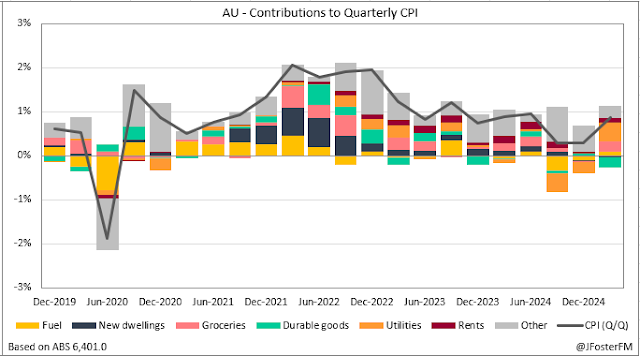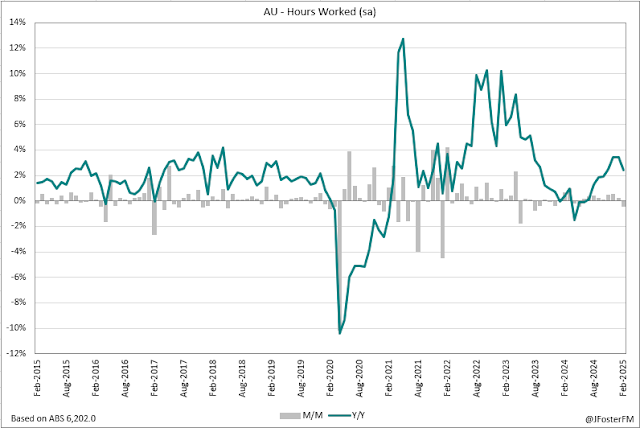After narrowing to a 4½-year low in February ($2.9bn), Australia's goods surplus widened to a 13-month high of $6.9bn in March, more than double the $3.1bn consensus estimate. This was driven by the fastest rise in exports (7.6%) in nearly 3 years, boosted by US exports to front run the Trump administration's trade tariffs. Meanwhile, imports posted their sharpest decline in 6 months (-2.2%). Separately, the ABS reported that export prices rose by 2.1% in the March quarter while import prices lifted by 3.8%, with Australian dollar depreciation a key factor.
The goods surplus defied a narrowing trend to widen to its highest level in 13 months at $6.9bn in March. On the back of this result, the 3-month average for the goods surplus lifted off a 54-month low ($4.3bn) to $5bn. Cumulatively, the goods surplus was $15.1bn across Q1, moderating from the prior quarter ($16.3bn).
Exports accelerated by 7.6% for the month in March to $45.3bn, rising by 2.4% over the first quarter of the year. Notably, US-bound exports lifted by 8.6% to $5.6bn, surging during the opening months of 2025 ahead of the Trump administration's impending tariffs.
In March, exports were led by growth in non-rural goods - a category dominated by the major resource exports - and non-monetary gold. Non-rural goods rose by 8.6% in the month to post their fastest rise since April 2022, with large increases coming through in iron ore (11.6%) and coal (10.7%). The ABS's trade price release today reported that economic stimulus measures in China and weather-related disruptions in Australia put upward pressure on commodity prices. A continuation of safe-haven demand amid volatile market conditions underpinned another steep rise in non-monetary gold (25.9%).

















































